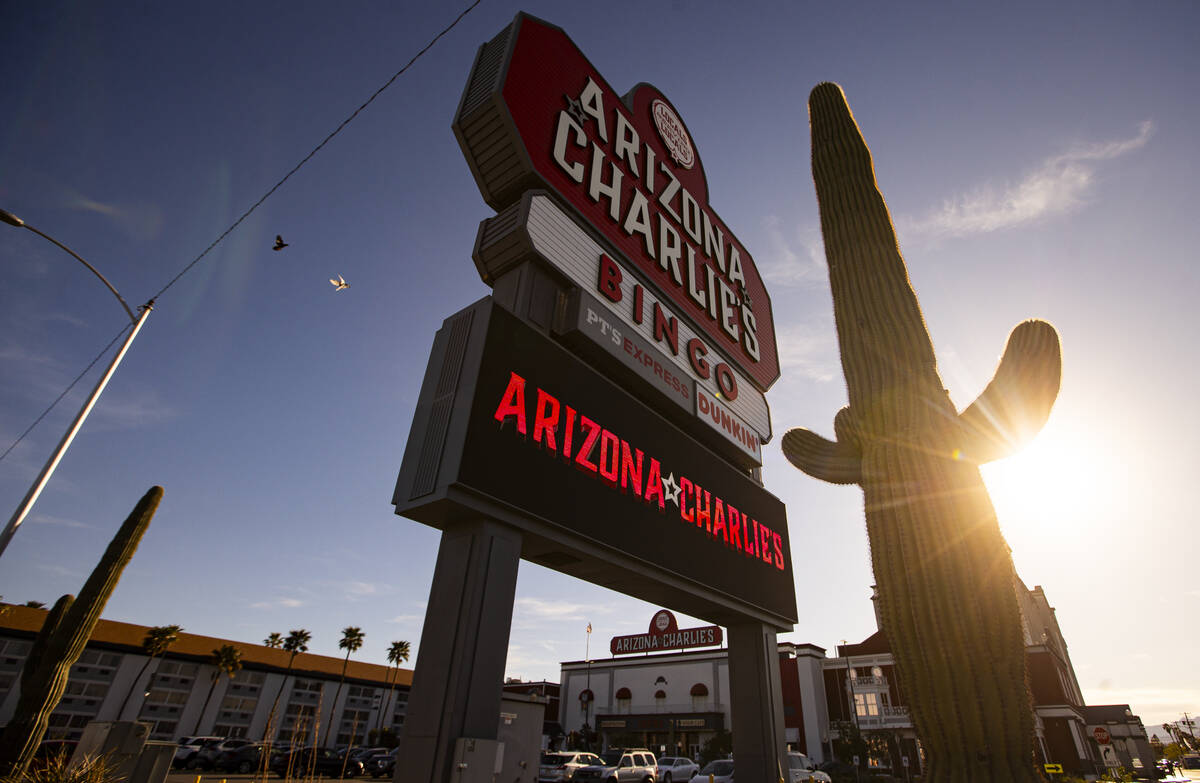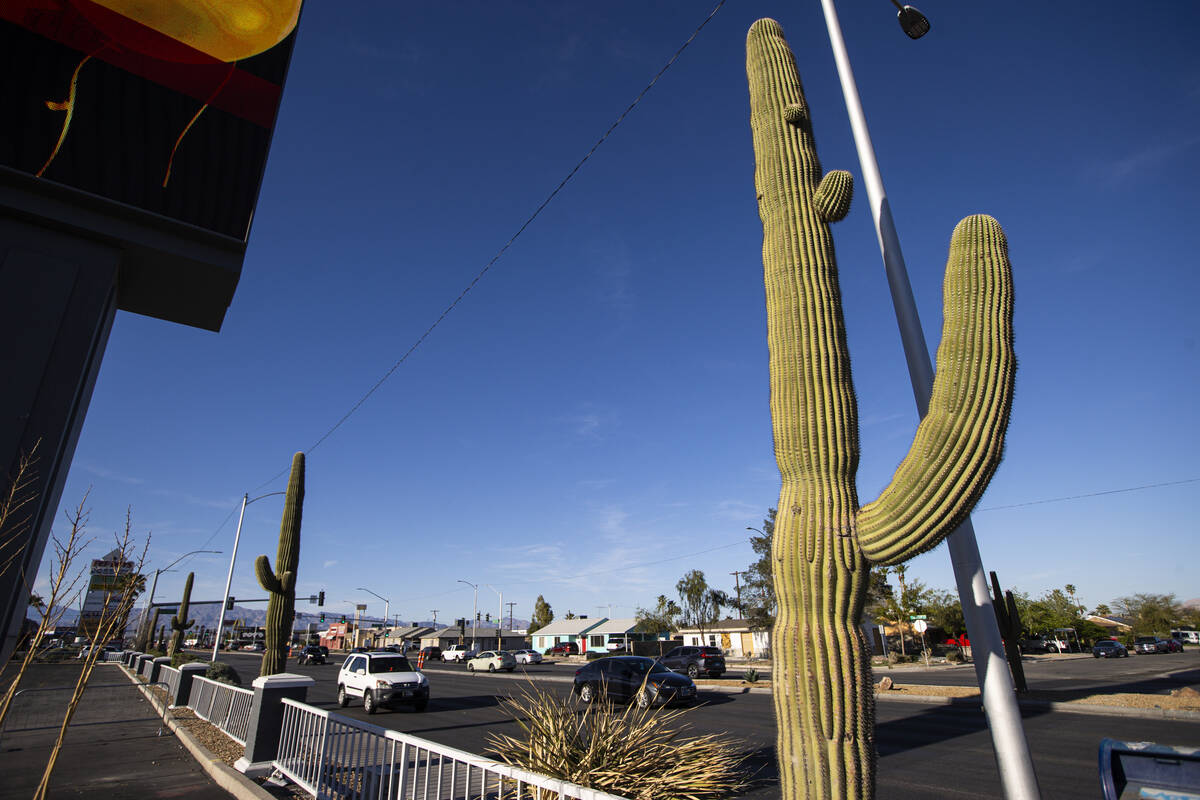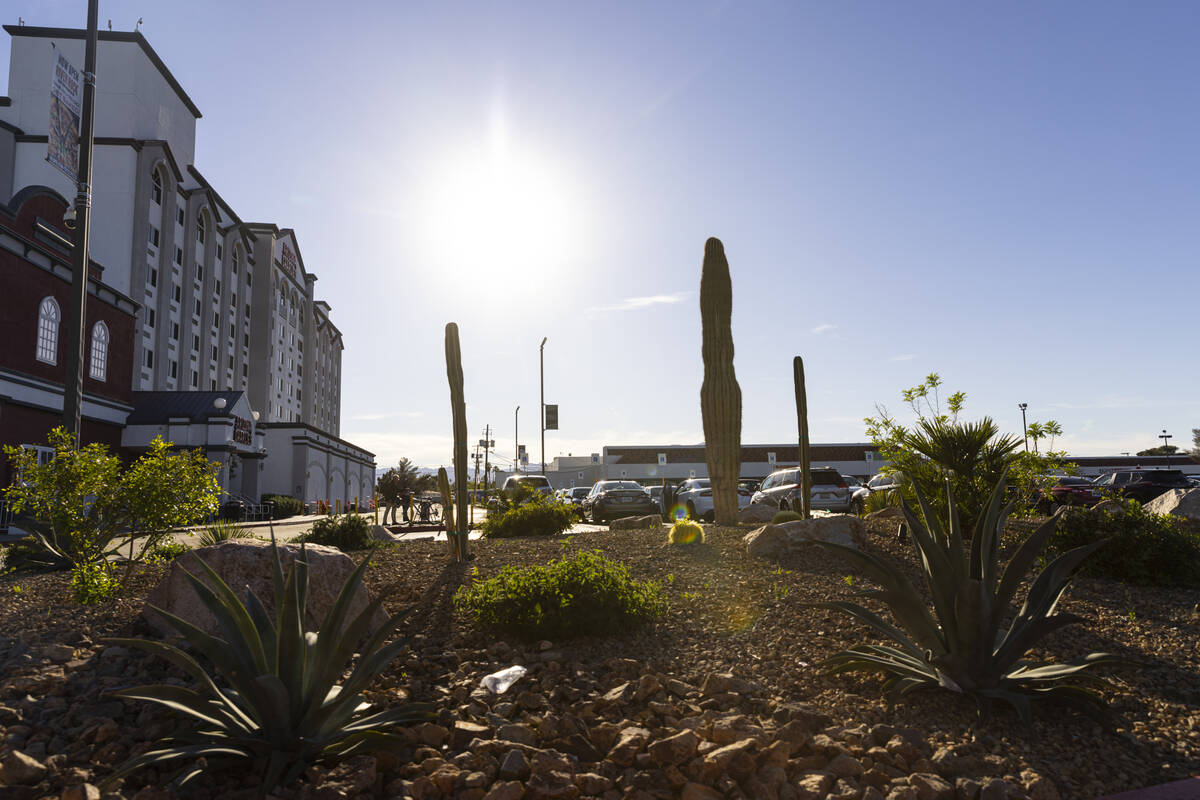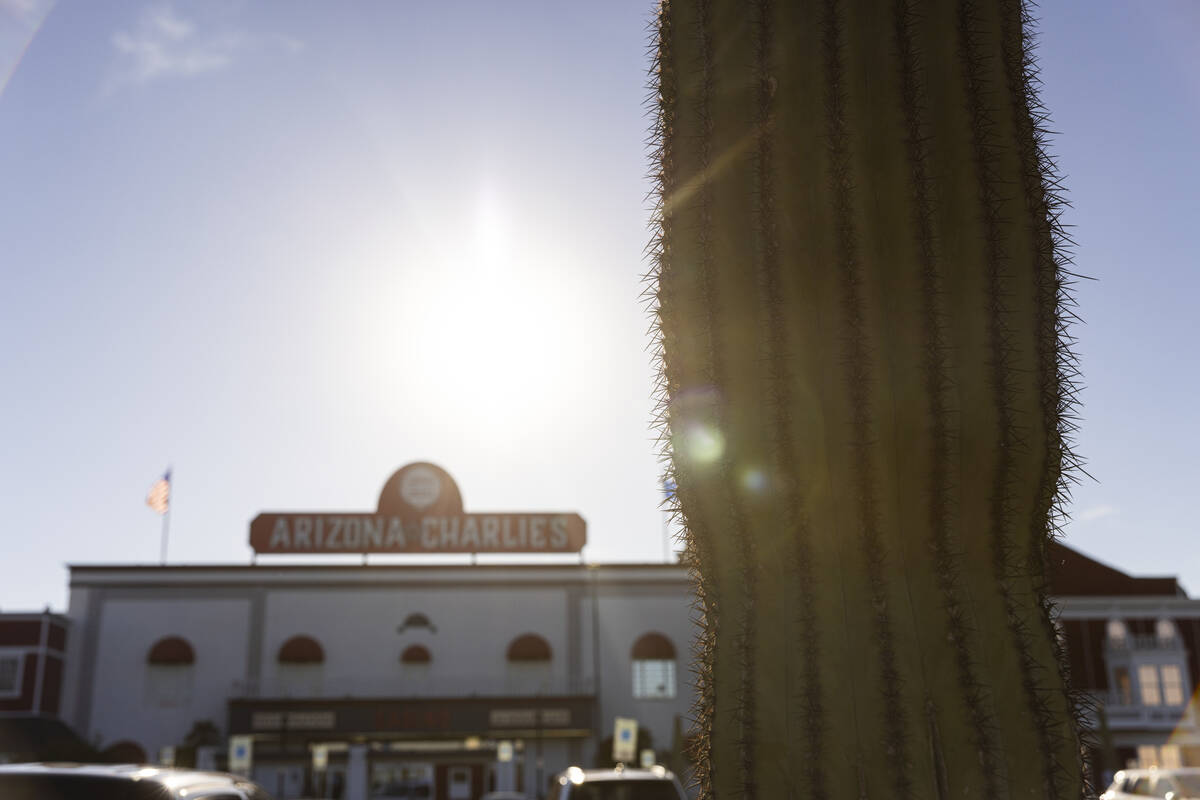Do saguaros grow in Las Vegas? It’s complicated
If you’ve ever wandered into a Las Vegas souvenir shop, you’ve likely seen some Las Vegas T-shirt or trinket with a saguaro cactus — an iconic Southwestern motif recognized by its large arms and tall, slender stature.
Saguaros on Las Vegas merchandise isn’t just a faux pas with the mom-and-pop souvenir shops you might walk by along the Strip. The NFL even put saguaros on T-shirts and earrings for the 2024 Super Bowl.
Folks new to Las Vegas might be surprised to find out that the cactuses — which can grow to be as much as 50 to 70 feet tall — can’t be found in Southern Nevada’s desert.
So, why don’t the quiet giants grow around Las Vegas like they do in Phoenix?
The short answer: It’s too dry and too cold for them here.
The Sonoran Desert, which extends from southern Arizona south into the Sonora and Baja California, Mexico, and the far, eastern edge of California near the Colorado River, is the only place on Earth where you’ll find saguaros.
Somewhere south of Kingman, Arizona, lies the transition zone between the Sonoran and Mojave deserts. The Mojave Desert extends from central Nevada to northeastern Arizona and from southeastern California to southwestern Utah.
Peter Breslin, a plant ecology researcher at the University of Arizona’s Desert Laboratory at Tumamoc Hill in Tucson, says saguaros need several years of mild, wet summers and winters for them to develop and establish themselves — conditions the plant can hardly find in the Mojave.
Las Vegas averages about 4 inches of rain a year, but Tucson, home of Saguaro National Park, gets over twice as much. The species also hates frost, and can even be killed by long periods of freezing temperatures that can occur periodically in the Mojave Desert, Breslin said.
“There’s conditions just northwest of Kingman that saguaros just haven’t adapted to that relate to both being more dry and colder,” Breslin said.
When saguaros do try to naturally grow close to the Mojave, like they do along the California-Arizona border, they often look “beat up and dried out,” and grow much slower than the ones farther east in southern Arizona, Breslin said.
“That just shows you sort of the narrow range of conditions that the saguaros are adapted to,” he said.
Growing saguaros in Southern Nevada
Though they don’t grow naturally in the Mojave, saguaros can still be used for landscaping in Las Vegas.
Breslin said they need a lot more water than what the environment here naturally provides and must be an already established plant before moving to someone’s yard.
With supplemental water, saguaros can survive in the Mojave’s drier climate.
“When people put them at their house or in landscaping, they’ve already gone through the establishment phase and they can adjust to the lower amounts of water in the Mojave,” he said.
Saguaros also need enough room for their roots to keep themselves up. Breslin recommends saguaro owners give their plant a 10-foot radius, some loosened up soil and some two-by-fours and a blanket to secure the plant while it gets adjusted to its new environment.
Owners should also figure out where the warmest and coldest parts of their yard are, and plant the saguaro somewhere warm — preferably with the plant south-facing near a wall — to help the plant be more frost-resistant, he said.
Why people choose to spend hundreds of dollars on a plant that isn’t supposed to grow in Las Vegas remains up for debate, but Breslin says the reason why he believes people love saguaros across the Southwest is likely because they look like people with their large arms and upright bodies.
“They have a very whimsical kind of noticeable appearance that perhaps we can identify with as upright mammals,” he joked.
Saguaros also have significant spiritual and cultural significance to Arizona’s indigenous Tohono O’odham people, whose calendar begins with the month when saguaro fruit is harvested at the beginning of the summer monsoon season.
“Perhaps we use these symbols, even when they don’t grow where they are, because we identify, or feel some kind of kinship.”
Contact Taylor Lane at tlane@reviewjournal.com.
































